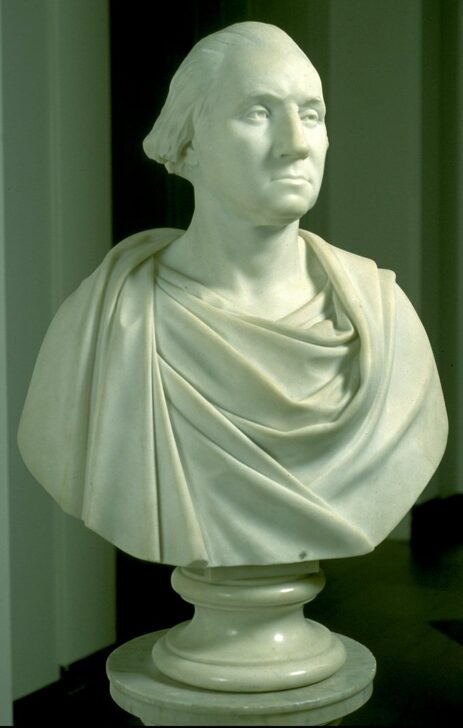Bust of George Washington (1732-1799), after Jean-Antoine Houdon (1741-1828)
Randolph Rogers

Description
Subject Matter:
An American expatriate sculptor, Randolph Rogers grew up in Ann Arbor but spent much of his adult life in Rome. As was typical of many aspiring 19th-century American sculptors, Rogers went to Italy to study classical Greek and Roman art as an essential prelude to becoming an accomplished artist. Although he was accustomed to studying and copying from classical sculpture, he also created replicas of 18th-century works, such as French sculptor Jean-Antoine Houdon’s Bust of George Washington, whose heroicized likeness, draping fabric and reserved expression would have appealed to Rogers’ Neoclassical taste. Rogers completed the bust of Washington in 1868, just three years after the end of the American Civil War, during a time of great change and an increasing desire on both moral and aesthetic grounds to return to the order, democracy and calm grandeur of the Roman Republic.
Houdon modeled his bust of George Washington from life in 1785 after spending two weeks in Washington’s home at Mount Vernon taking measurements, making casts of the general’s shoulders and sculpting wet clay models, which he used to produce countless commissioned sculptures in numerous variations. Rogers likely copied Houdon’s bust from photographs or prints of the work, first modeling it in clay, then casting it in plaster to be given to stonecutters who sculpted it in marble, as was common practice among many sculptors of the time.
Physical Description:
This is a white marble sculpture that depicts the upper torso of a man. There is drapery wrapped loosely around his figure. He is shown staring into the viewer's space and his facial expression is calm and reserved. This sculpture is carved in a realistic manner and rests on a columnar pedestal.
Usage Rights:
If you are interested in using an image for a publication, please visit https://umma.umich.edu/request-image/ for more information and to fill out the online Image Rights and Reproductions Request Form.